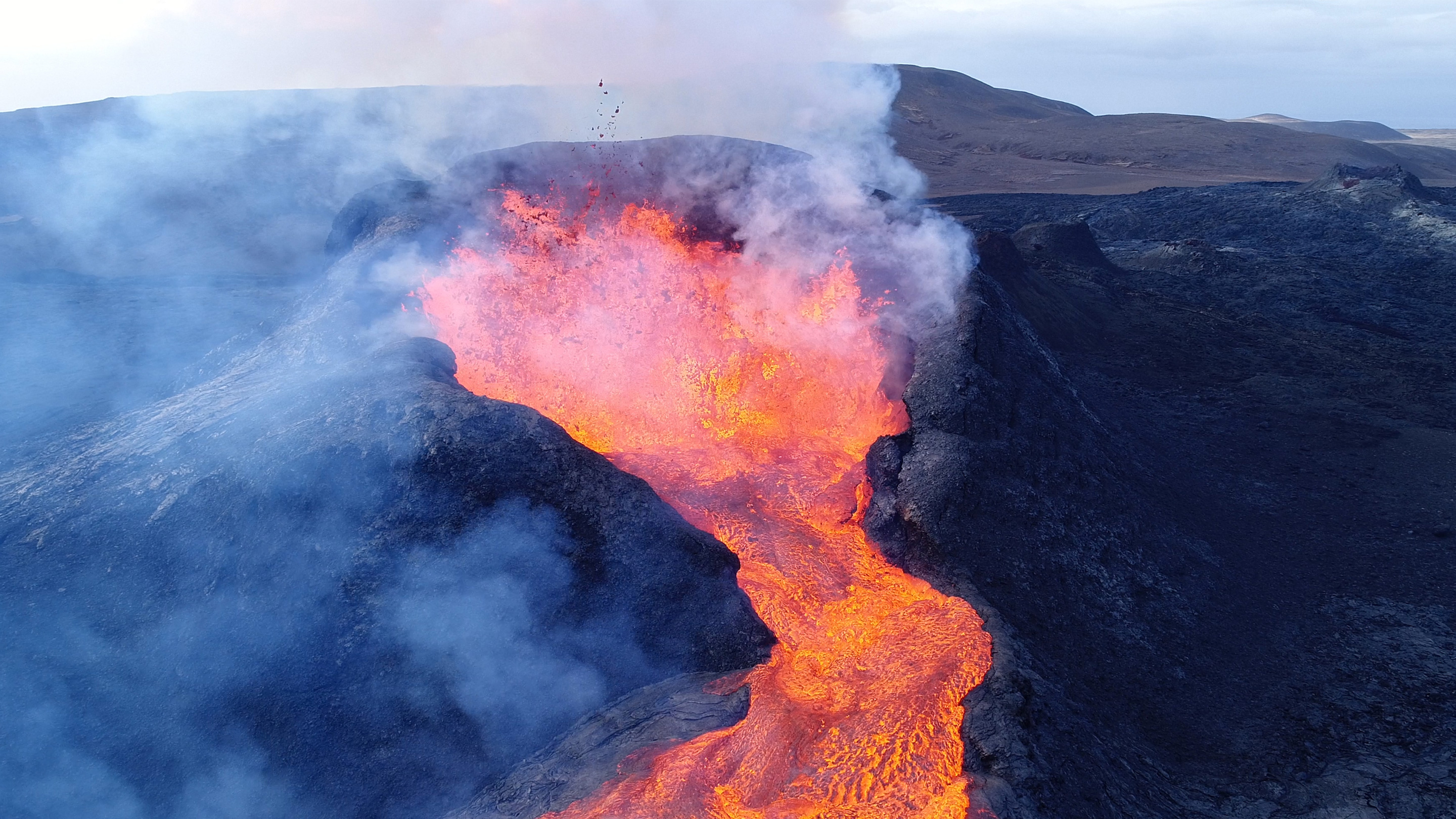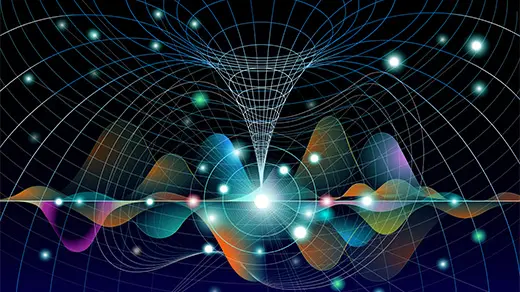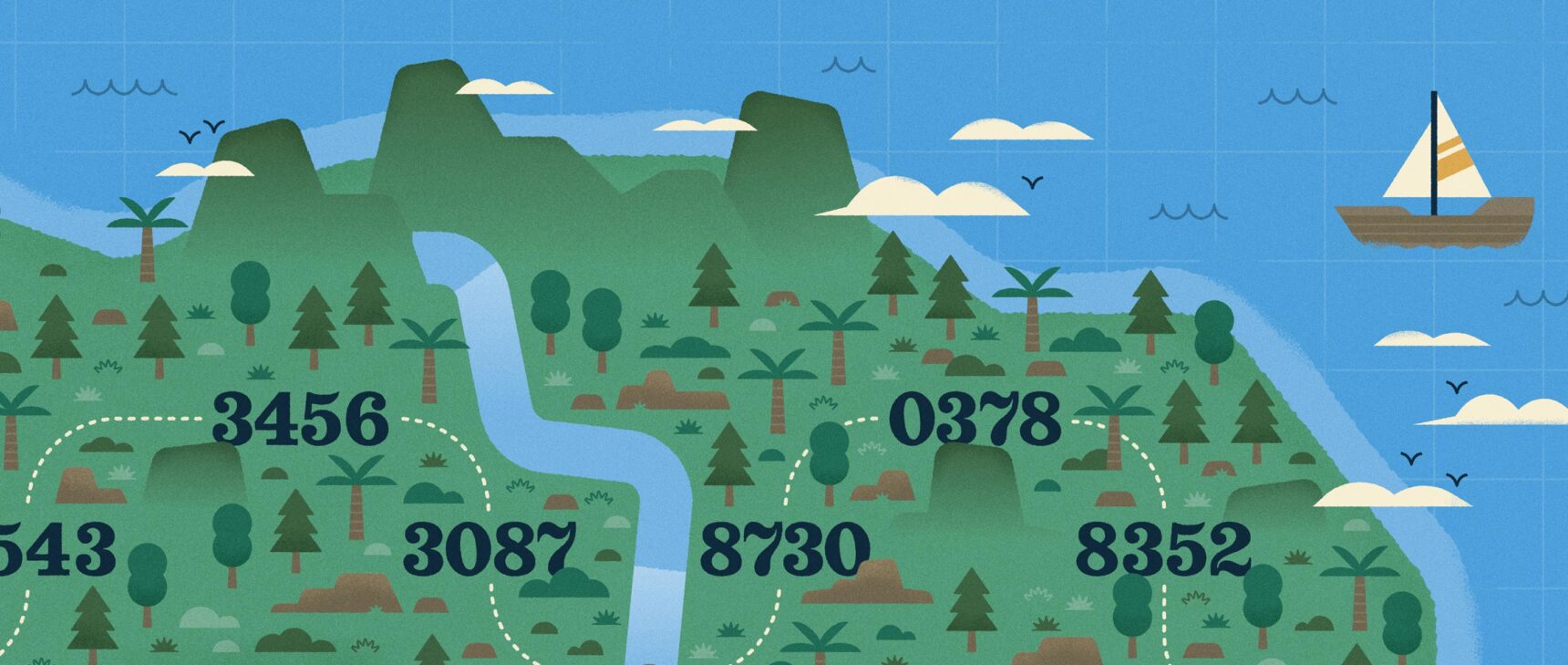A Burp or a Blast? Seismic Signals Reveal the Volcanic Eruption to Come
Introduction
Last December, a gloopy ooze of lava began extruding out of the summit of La Soufrière, a volcano on the Caribbean island of St. Vincent. The effusion was slow at first; no one was threatened. Then in late March and early April, the volcano began to emit seismic waves associated with swiftly rising magma. Noxious fumes vigorously vented from the peak.
Fearing a magmatic bomb was imminent, scientists sounded the alarm, and the government ordered a full evacuation of the island’s north on April 8. The next day, the volcano began catastrophically exploding. The evacuation had come just in time: At the time of writing, no lives have been lost.
Simultaneously, something superficially similar but profoundly different was happening up on the edge of the Arctic.
Increasingly intense tectonic earthquakes had been rumbling beneath Iceland’s Reykjanes Peninsula since late 2019, strongly implying that the underworld was opening up, making space for magma to ascend. Early in 2021, as a subterranean serpent of magma migrated around the peninsula, looking for an escape hatch to the surface, the ground itself began to change shape. Then in mid-March, the first fissure of several snaked through the earth roughly where scientists expected it might, spilling lava into an uninhabited valley named Geldingadalur.
Here, locals immediately flocked to the eruption, picnicking and posing for selfies a literal stone’s throw away from the lava flows. A concert recently took place there, with people treating the ridges like the seats of an amphitheater.
In both cases, scientists didn’t just accurately suggest a new eruption was on its way. They also forecast the two very different forms these eruptions would take. And while the “when” part of the equation is never easy to forecast, getting the “how” part right is especially challenging, especially in the case of the explosive eruption at La Soufrière. “That’s a tricky one, and they nailed it, they absolutely nailed it,” said Diana Roman, a volcanologist at Carnegie Institution for Science.
Volcanologists have developed an increasingly detailed understanding of the conditions that are likely to produce an explosive eruption. The presence or absence of underground water matters, for instance, as does the gassiness and gloopiness of the magma itself. And in a recent series of studies, researchers have shown how to read hidden signals — from seismic waves to satellite observations — so that they may better forecast exactly how the eruption will develop: with a bang, or a whimper.
Something Wicked This Way Comes
As with skyscrapers or cathedrals, the architectural designs of Earth’s volcanoes differ wildly. You can get tall and steep volcanoes, ultra-expansive and shallowly sloped volcanoes, and colossal, wide-open calderas. Sometimes there isn’t a volcano at all, but chains of small depressions or swarms of fissures scarring the earth like claw marks.
Eruption forecasting asks a lot of questions. Chief among them is: When? At its core, this question is equivalent to asking when magma from below will travel up through a conduit (the pipe between the magma and the surface opening) and break through, as lava flows and ash, as volcanic glass and bombs.
When magma ascends from depth, it can alter a volcano’s architecture, literally changing the shape of the land above. Migrating magma flows can also force rock apart, generating volcano-tectonic earthquakes. And when the pressure keeping magma trapped underground declines, it liberates trapped gas, which can escape to the surface.
Eruption forecasters look for any of those three signs: changes in a volcano’s shape, its seismic soundscape or its outgassing. If you spy changes in all three — changes that are clearly very different from the volcano’s everyday behavior — then “there is no doubt that something is going to happen,” said Maurizio Ripepe, a geophysicist at the University of Florence in Italy. That something is often, eventually, an eruption.
Change doesn’t always mean an uptick in activity. Most volcanoes get noisier and twitchier before erupting, but sometimes the opposite is true. Seismologists in Iceland, for example, recorded a drop in volcanic tremor immediately prior to the opening of Reykjanes’ first five fissures. When the sixth drop happened, said Thorbjörg Ágústsdóttir, a seismologist at Iceland GeoSurvey, scientists forecast that a sixth fissure was about to appear — and they were right.
The ‘How’ of the Equation
Increasingly, it’s also possible to forecast not just when or if a volcano will erupt, but how.
Unspooling the history of each specific volcano is key, as individual volcanoes tend to have their own eruptive style. To find it, scientists will examine the geological strata around a volcano, forensically exhuming and examining the remains of old eruptions. The last eruption on Iceland’s Reykjanes Peninsula had occurred 800 years ago, long before the advent of modern science. But because of this sort of detective work, scientists knew that the eruptions there have always been relatively tranquil affairs. If a recent eruption history is available, one documented in real time by scientists, all the better; that’s why scientists knew La Soufrière was likely to speedily switch from an effusive to an explosive eruption style.
The latest work on eruption forecasting goes far beyond these historical catalogs. Take Stromboli, a volcano barely sticking above the waters of the Tyrrhenian Sea. This picturesque isle spends much of its time exploding — usually small blasts that harm no one. After studying how it changes shape for two decades, Ripepe and his colleagues have determined that it inflates just before it explodes. Moreover, the exact change in shape reveals whether the blast will be major or minor. Since October 2019, the volcano has had an early warning system. It can detect the type of inflation indicative of the most extreme explosions, the sort that have killed people in the past, up to 10 minutes before the blast arrives.
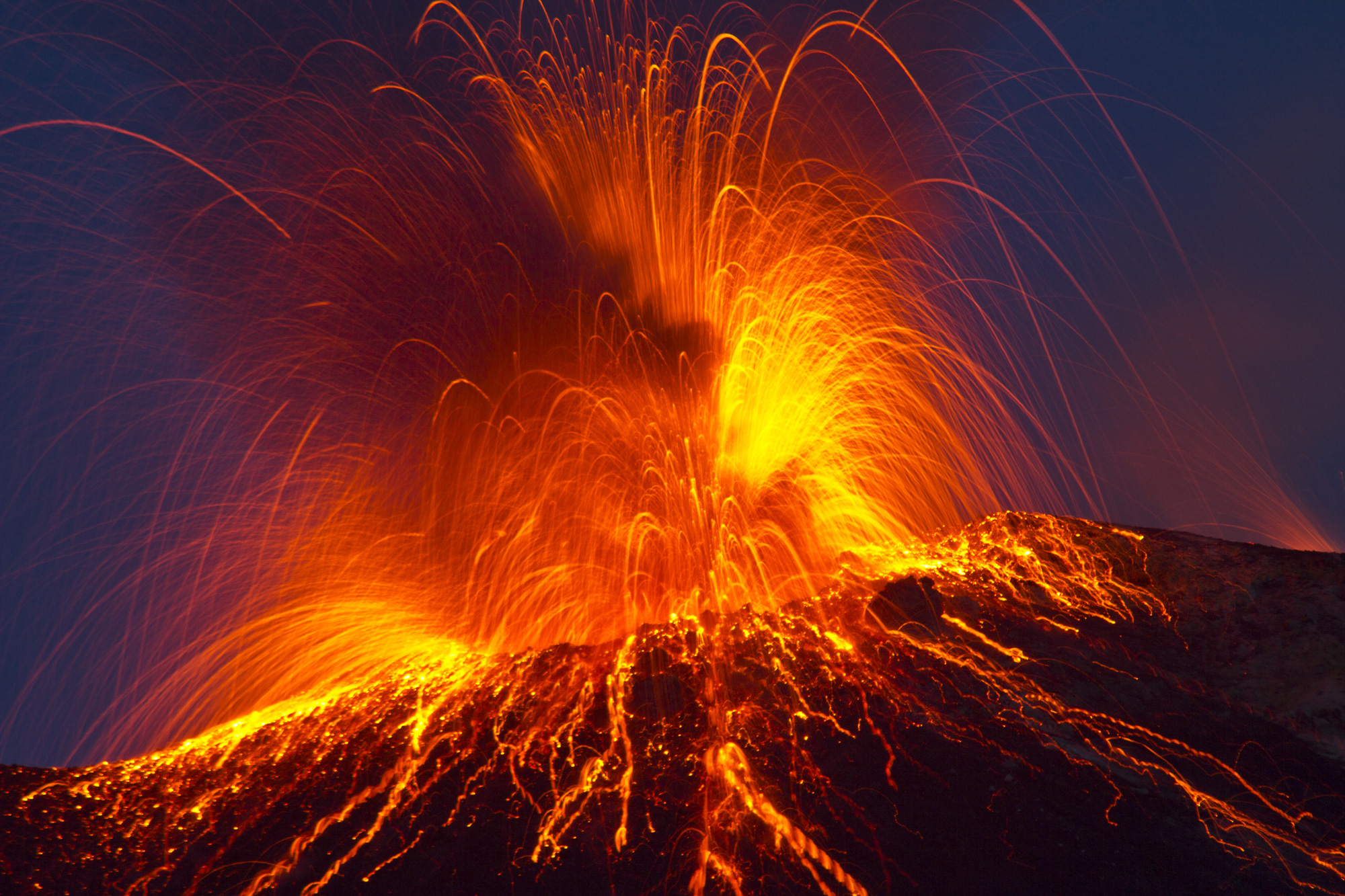
Stromboli subtly inflates just before it explodes.
Rainer Albiez
Stromboli is a relatively simple volcano, though, one in which the plumbing from the magma to the skylight up top remains more or less open. “The magma movement does not generate any fractures. It just comes up,” Ripepe said.
Most volcanoes are more complicated: They harbor a diverse array of magma types that need to force their way out of the volcano. That means they produce eruptions that “change a lot as they happen,” said Arianna Soldati, a volcanologist at North Carolina State University. Over the course of days, weeks, months or years, an eruption can go back and forth between oozing and exploding. Is it possible to forecast these changes?
Soldati, Roman and their colleagues found a way to test this by looking to the Big Island of Hawai‘i. Kīlauea, near the island’s southeastern coast, had been continuously erupting in some form or another since 1983. But in the spring and summer of 2018, the volcano put on a hell of a show: The lava lake at its summit drained away, as if someone had pulled the plug from a bath; magma made its way underground to the eastern flanks of the volcano and tore open cracks in the earth, gushing out of them for three months straight, sometimes shooting skyward as tall fountains of molten rock.
As this happened, the researchers took lava samples, concentrating on one feature in particular: viscosity. Gloopier, stickier magma traps more gas. When this viscous magma reaches the surface, its gas violently decompresses, creating an explosion. Runnier magma, by contrast, lets gas escape gradually, like a soda left unattended on a table.
In 2018, the viscosity of the lava on Kīlauea kept changing. Older, colder magma was more viscous, while newly tapped magma from depth was hotter and more fluid.
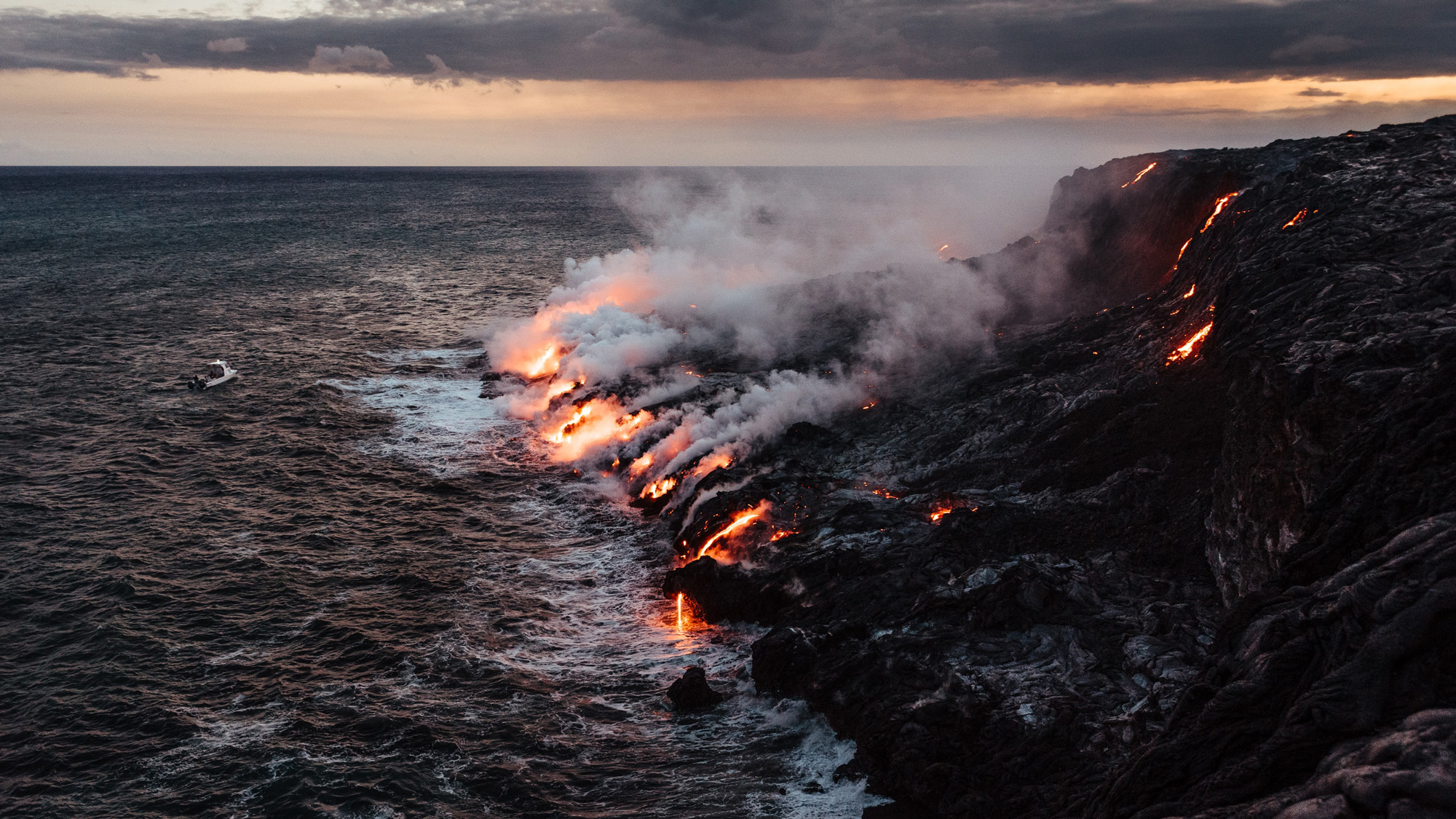
A study of the 2018 eruptions on Kīlauea, Hawai‘i, connected the consistency of the magma coming up to specific seismic signals.
Cedric Letsch
Roman and colleagues discovered that they could track these changes by monitoring the seismic waves emerging from the volcano and comparing them with the varying viscosity of the lava they sampled. For reasons yet to be determined, as runnier magma ascends, it forces the rocky walls on either side of it only a little bit apart. Gloopier magma, by contrast, exerts a strong force, pushing open a wider pathway. In a paper published this April in Nature, the researchers showed that they could use seismic waves, which differed depending on the way the rock was forced open, to forecast the change in the erupted lava’s viscosity hours to days in advance of that magma’s eruption.
“Having found something that tells us, yes, if you have this kind of seismicity, viscosity is increasing, [and] if it’s above this threshold, it could be more explosive — that is super cool,” said Soldati. “For monitoring and hazards, this actually has the potential to be impactful now.”
Nanoscopic Nuisances
Many factors influence magma viscosity. One in particular has been overlooked, mostly because it’s nearly invisible.
Danilo Di Genova, a geoscientist at the University of Bayreuth in Germany, studies nanolites — crystals about one-hundredth of the size of your average bacterium. They are thought to form at the top of the conduit as magma gushes up it. If you get enough of these crystals, they can lock up the magma, imprison trapped gas and increase the viscosity. But unless you have very powerful microscopes to look at freshly erupted lava, they’ll be imperceptible.
Di Genova has long been interested in how nanolites form. His experiments using silicon oil — a proxy for basalt, a commonplace runny magma — showed that if just 3% of an oil-particle mixture is made of nano-size particles, the viscosity spikes.
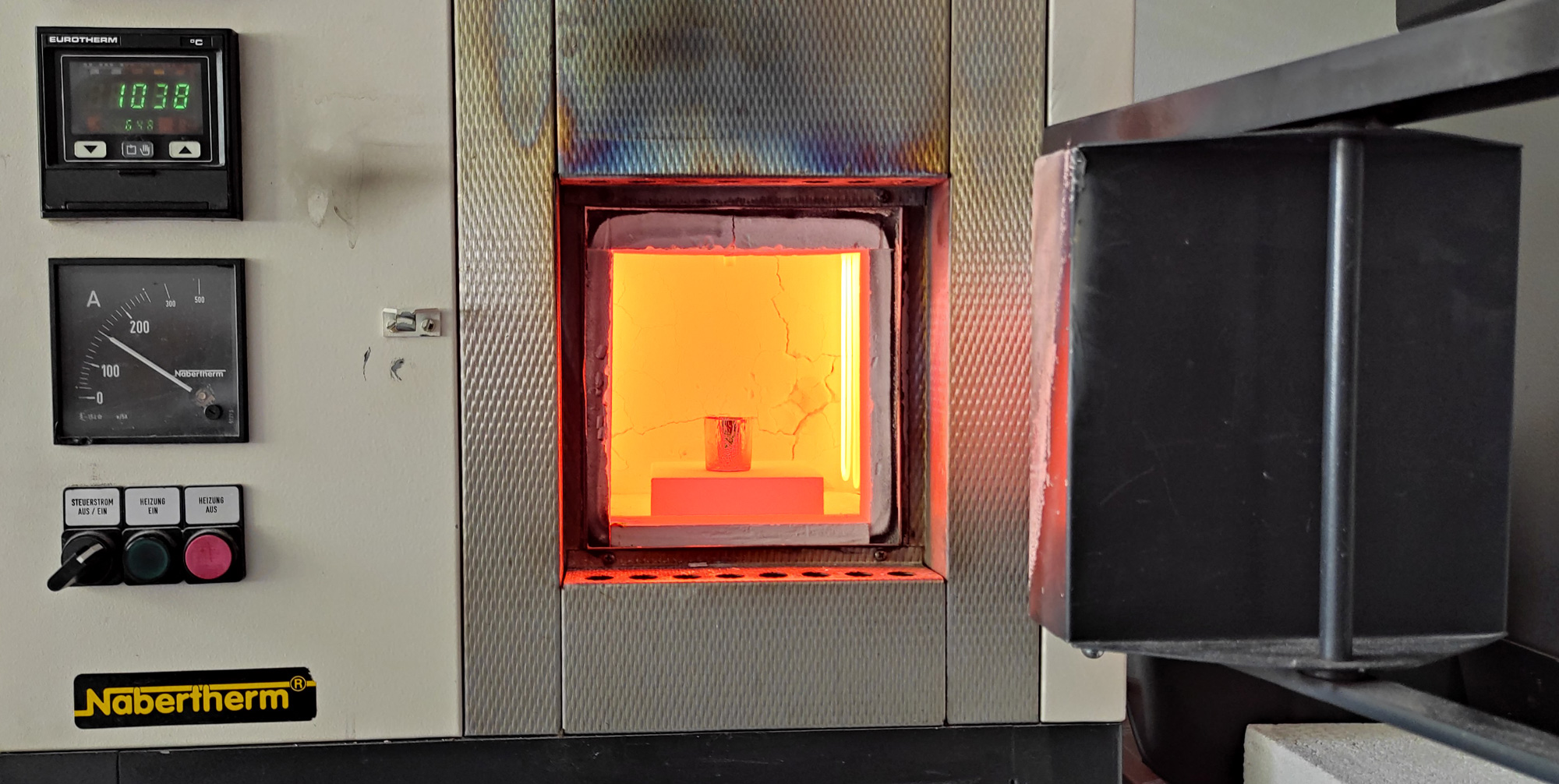
Researchers have studied nanolites in the laboratory by melting basaltic rock into magma. The rock is heated inside a platinum crucible.
Courtesy of Danilo Di Genova
He then turned to the real thing. He and his colleagues attempted to simulate what magma would experience as it rose through a conduit to the surface. They subjected lab-melted basaltic rock from Mount Etna to gradual heating, pulses of sudden cooling, hydration and dehydration. At times, they placed the magma inside a synchrotron, a type of particle accelerator. Within this contraption, powerful X-rays interact with a crystal’s atoms to reveal their properties and — if the crystals are small enough — their existence.
As reported last year in Science Advances, the experiments gave the team a working model of how nanolites form. If an eruption begins and magma suddenly accelerates up through the conduit, it rapidly depressurizes. That lets water come out of the molten rock and form bubbles, which dehydrates the magma.
This action changes the thermal properties of the magma, making it a lot easier for crystals to be present even at extremely high temperatures. If the magma’s ascent is sufficiently rapid and the magma is speedily dehydrated, a cornucopia of nanolites comes into being, which significantly increases the magma’s viscosity.
This change doesn’t give off a noticeable signal. But merely knowing it exists, said Di Genova, may enable researchers to explain why volcanoes with otherwise runny magma, like Vesuvius or Etna, can sometimes produce epic explosions. Seismic signals can trace how quickly magma is ascending, so perhaps that may be used to forecast a last-minute nanolite population boom, one that leads to a catastrophic blast.
Sweeping Away the Fog
These advances aside, scientists are still a long way from replacing eruption probabilities with certainties.
One reason is that “most of the world’s volcanoes are not that well monitored,” said Seth Moran, a research seismologist at the U.S. Geological Survey’s Cascades Volcano Observatory. This includes many of America’s Cascades volcanoes, several of which have a propensity for giant explosions. “It’s not easy to forecast an eruption if there are sufficient instruments on the ground,” said Roman. “But it’s very, very difficult to forecast an eruption if there are no instruments on the volcano.”
Another problem is that some eruptions currently have no clear-cut precursors. One notorious type is called a phreatic blast: Magma cooks overlying pockets of water, eventually triggering pressure cooker-like detonations. One rocked New Zealand’s Whakaari volcano in December 2019, killing 22 people visiting the small island. Another shook Japan’s Ontake volcano in 2014, killing 63 hikers.
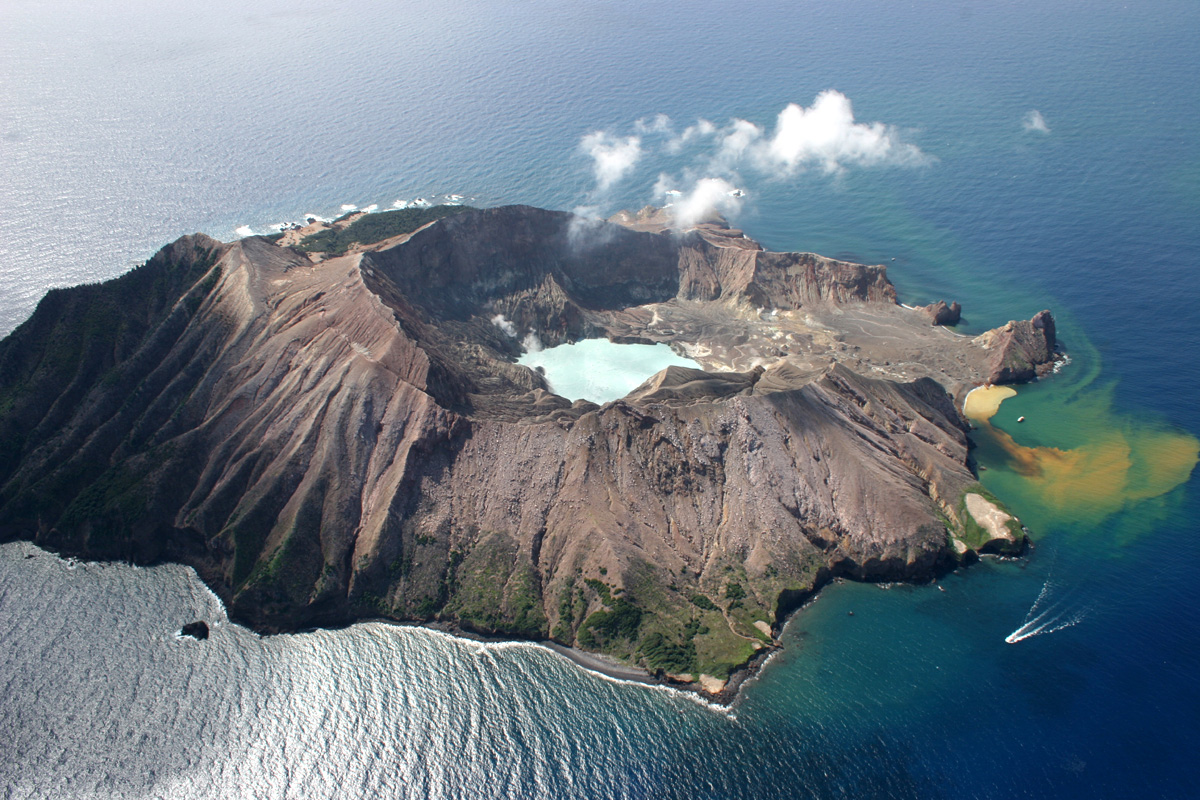
New Zealand’s Whakaari volcano gave no warning before it catastrophically exploded in December 2019, killing 22 people.
A recent study led by Társilo Girona, a geophysicist at the University of Alaska, Fairbanks, found that satellites can detect gradual, year-over-year upticks in the thermal radiation coming off all sorts of volcanoes in the run-up to an eruption. A retrospective analysis showed that such a temperature increase was detected before Ontake’s 2014 phreatic explosion, with a peak around the time of the event.
Perhaps monitoring from space will become the best way to see future phreatic eruptions coming. But so far, no successful long-term forecast of a phreatic eruption has taken place. “Phreatic eruptions are terrifying,” said Jackie Caplan-Auerbach, a volcanologist and seismologist at Western Washington University. “You really don’t know they’re coming.”
It’s not just explosions that can prove tricky to forecast. Nyiragongo, a mountainous volcano in the Democratic Republic of Congo, suddenly erupted on May 22 of this year, spilling fast-moving lava toward the city of Goma. Despite being monitored, the volcano gave no clear warning it was about to erupt, and several people perished.
And no matter what type of eruption you are forecasting, the price of a false positive is crippling. “When you evacuate people and nothing happens, then the next evacuation is going to be orders of magnitude more difficult to get people to take seriously,” said Roman.
But there are reasons to be optimistic. Scientists are grasping the physics underlying all volcanoes better than ever. Individual volcanoes are also becoming more familiar because of “a mixture of instinct and experience and learned knowledge,” said David Pyle, a volcanologist at the University of Oxford. Soon, he predicts, machine learning programs, capable of identifying patterns in data faster than any human, will become a major player.
Certainty in eruption forecasting — the if, when or how — will probably never come to pass. But day by day, the potentially deadly fog of uncertainty dissipates a little more, and someone who would have died a few decades ago during an eruption now gets to live.
